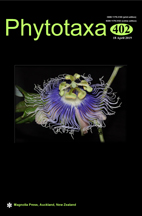Abstract
One nuclear and three chloroplast DNA markers (internal transcribed spacer [ITS], rbcL, matK, and trnH-psbA) were evaluated from 39 accessions of Omphalogramma (Primulaceae) from the Hengduan Mountains, representing seven species. The discrimination power of the markers at the species level was 14.3% (rbcL), 28.4% (trnH-psbA), 42.9% (matK), and 100% (ITS). The mean value of genetic distance between species for ITS was more than 3-fold that of intraspecific distance; all species were distinguished. Species were differentiated by unique characters, and phylogenetic analysis showed that the Omphalogramma species formed two clear monophyletic clades comprising O. vincaeflora (bootstrapping: 96.8%) and remaining Omphalogramma species (bootstrapping: 97.5%). This study indicated that DNA barcoding is a useful technique in the phylogenetic and taxonomic description of Omphalogramma species.

